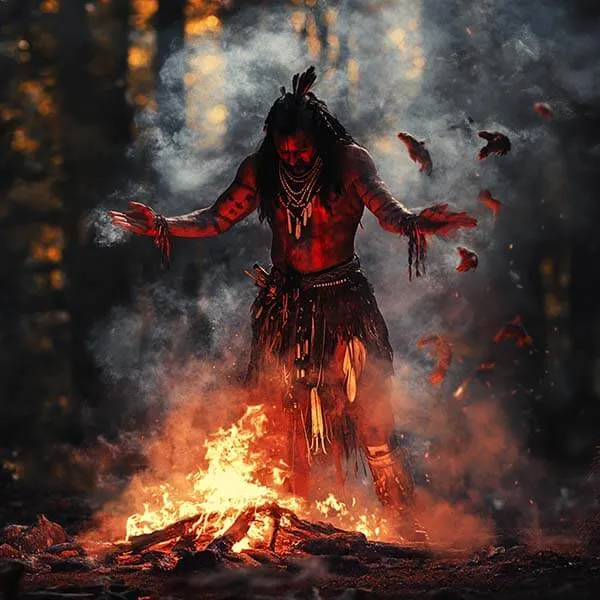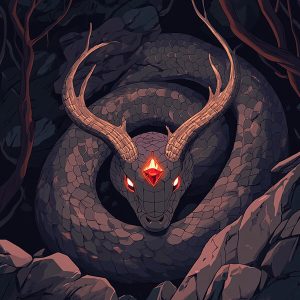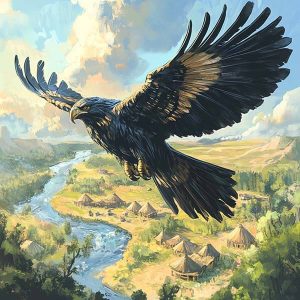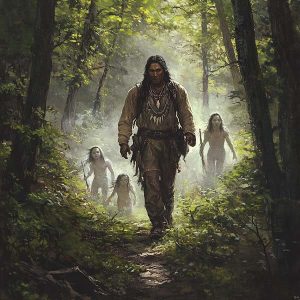The Creator

Importance of Cherokee Mythology
Cherokee mythology teaches how important decisions shape the world around us. The word “Duyuktv” means “the right way.” The oral traditions that enlightened previous generations carry the importance of Duyuktv to new generations. In addition, lessons learned from the ancestors’ teachings build a connection with nature and respect for the spirits that inhabit the world.
Selfish choices have consequences, so it is vital to abide by community ethics and morals. Following the lessons of Duyuktv, build values and honor the generations that came before us.
Early History of the Cherokee People
The Cherokee people are believed to have migrated from the Iroquois to the Great Lakes region, which includes Quebec, Ontario, and New York. Linguists analyzed the difference between Cherokee (an Iroquoian language base) and the Iroquois, estimating that this migration occurred around 3000 – 3800 years ago. Migrating through the Appalachian Mountains, they eventually settled in North and South Carolina, Georgia, Tennessee, and Alabama.
They refer to themselves as Ani-Yun’wiya, meaning “Real People.” However, the name Cherokee (people of different speech) likely came from the Muscogee (Creek) tribe in the area where they settled. Despite this, they prefer going by the name Tsalagi or Keetoowah.
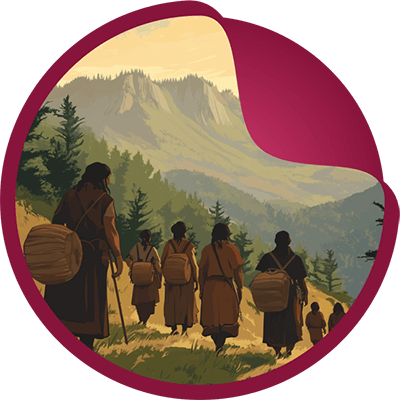

Cherokee Society
The Cherokee comprises seven clans: the Wolf, Deer, Bird, Long Hair, Blue, Painted, and Wild Potato. Society is matrilineal, meaning children inherit their clan from their mother. Women were prominent figures within the clans, often being the landowners and responsible for cultivating agriculture. Men, on the other hand, were responsible for hunting, gathering, and warriors. Marriage within the same clan is forbidden.
Towns are either red (warring) or white (peaceful). Extended families generally live in the same house, which varies depending on the season. Summer houses comprised woven bark or mats and wood; they were larger and rectangular with open ventilation. Conversely, winter houses were circular, with wooden frames covered in mud, clay, and grass.
Staple diets of the Cherokee ranged from:
- Hunting: Deer, turkey, bear, small game, and fish
- Agriculture: Corn, beans, squash, pumpkin, and sunflowers
- Foraging: Nuts, potatoes, artichokes, berries, and wild greens
Tobacco was also grown for the primary use in sacred rituals and ceremonies.

Cherokee Clans
The Cherokee clans each played a unique role in maintaining the nation as a whole. While each clan was self-sufficient, its specialty roles were vital for contributing to the tribe’s community. Each clan held responsibility for its members in discipline and justice.

Aniwaya
Wolf Clan
Protectors and warriors, this was the most prominent clan in the Tsalagi people. War chiefs traditionally came from this clan.

Anikawi
Deer Clan
These were hunters and traders known for being fast runners and their connection with nature.

Anitsiskwa
Bird Clan
Interpreting omens and signs was critical for these spiritual leaders and messengers.

Anigilohi
Long Hair Clan
The members of this clan were known for eloquence, diplomacy, and peacekeeping. Many peace chiefs came from the Long Hair Clan.

Anisahoni
Blue Clan
People from this clan traditionally work as medicine people with deep wisdom and understanding of healing.

Aniwodi
Paint Clan
These medicine men were often priests and spiritual leaders, conducting rituals and ceremonies.

Anigatogewi
Wild Potato Clan
An agricultural clan whose members are responsible for maintaining community food prosperity and sustainability.
Encountering Europeans
The first encounters between the Cherokee and the British occurred in the 1600s. Initially, they traded, and taught the British settlers how to hunt and grow the crops native to the region. Their relationships would be much like a pendulum, swinging back and forth from hostile to friendly.
Cherokee-British Wars
Between the 1710s and 1760s, there were minor skirmishes with the British, mainly relating to land disputes.
French and Indian War
During the French and Indian War, between 1754 and 1763, the Cherokee sided with the British to fend off the French from the Appalachian Mountains.
American Revolution
As the Americans encroached further into Cherokee lands, they sided again with the British to halt this progress. Ultimately, the Americans destroyed many villages as they fought the British. This war took place between 1765 and 1783.
Chickamauga Wars
After the American Revolution, the new country did not honor the British-signed treaties. Between 1776 and 1794, the Cherokee battled the Americans to maintain their lands. Eventually, this led to both sides signing a treaty requiring the cession of more land.

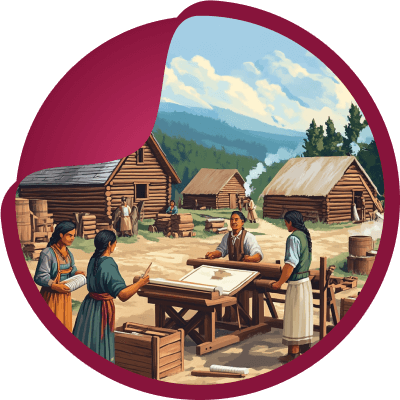
Efforts to Assimilate
After pressure from the U.S. government and witnessing their land grabs, the Cherokee made great strides to assimilate with Western culture. Sequoyah created a written language and published a tribal newspaper entitled The Cherokee Phoenix. Next, publishing a constitution emulating the United States made a government with three bodies.
Many people became bilingual and converted to Christianity, even creating boarding schools within their communities. As the tribe assimilated to American culture, they even changed their daily clothing and farming styles.
The Indian Removal Act
Despite the attempts to assimilate, Andrew Jackson passed the Indian Removal Act in 1830. The Cherokee nation disputed this with the Supreme Court, which eventually sided with them (Worcester v. Georgia, 1832). As a further slight, Andrew Jackson ignored this ruling and forcibly removed the Cherokee from their sacred lands between 1838 and 1839. This period was later named the Trail of Tears.
Trail of Tears
During the forced migration to Oklahoma, over 4000 Cherokee died due to hardships, starvation, disease, weather, and sadness. However, the Eastern Band Cherokee were allowed to remain in North Carolina as some held private land under the Treaty of 1819.
However, one leader, Yonaguska, had an adopted white son who could purchase land on their behalf. Yonaguska and another leader, Tsali, led a resistance to leave their lands, hiding in the rugged mountains. After skirmishes, which ended in the death of a soldier, Tsali eventually surrendered and was executed, leading to his folk hero status. His surrender resulted in the withdrawal of troops searching for the Cherokee, who were still in hiding.


Modern Cherokee Society
Today, there are three federally recognized Cherokee groups:
- Cherokee Nation (CN): The largest band of Cherokee who reside in Oklahoma.
- United Keetoowah Band of Cherokee Indians (UKB): This group consists of the Cherokee who voluntarily moved to Oklahoma before the Trail of Tears.
- Eastern Band of Cherokee Indians (EBCI): These are the descendants of the Cherokee that remained in the Great Smoky Mountains in North Carolina.
While all three groups reside on sovereign lands (reservations), each has its own tribal leader and government. The Cherokee Nation has approximately 450,000 registered members, making it the largest tribe in the United States. The Navajo Nation follows closely behind, with approximately 400,000 registered members.

